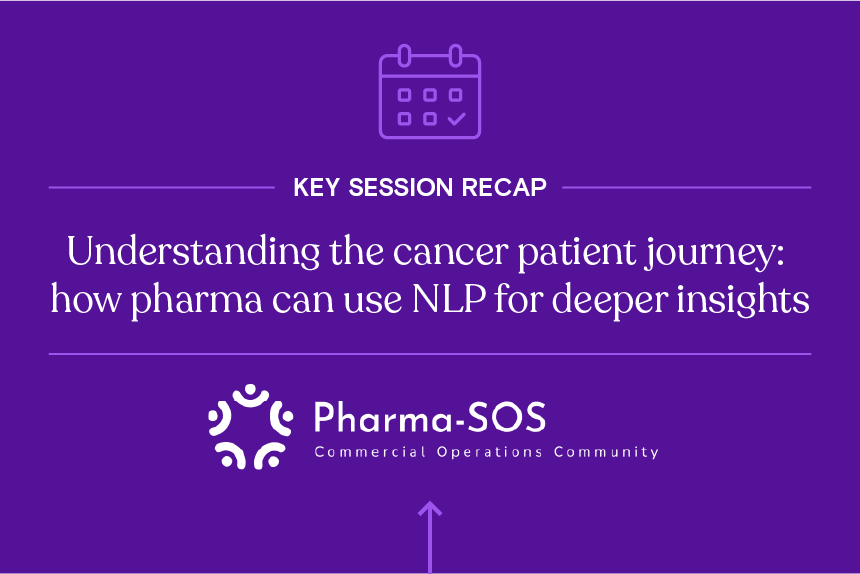Hospital emergency departments are on the front lines of healthcare, equipped with the specialists and resources necessary to provide critical care to patients facing sudden illness or severe injury.
As well-equipped as these facilities are, however, most patients seeking care in emergency departments do so for non-emergency medical events.
Every medical encounter in an emergency department/emergency room (ER) produces data that can help hospital leaders and providers understand the needs of their patients. We’ve analyzed these data to examine how patients use hospital emergency departments.
Check out the list below to see the most common diagnoses and ICD-10 codes from ER visits in the U.S.
Most common ER diagnoses
Rank | ICD-10 code | ICD-10 description | % total ER diagnoses in U.S. |
|---|---|---|---|
1 | I10 | Essential (primary) hypertension | 3.0% |
2 | Z20822 | Contact with and (suspected) exposure to COVID-19 | 2.1% |
3 | Z79899 | Other long-term (current) drug therapy | 1.4% |
4 | E785 | Hyperlipidemia, unspecified | 1.2% |
5 | E119 | Type 2 diabetes mellitus without complications | 1.0% |
6 | Z1231 | Encounter for screening mammogram for malignant neoplasm of breast | 0.9% |
7 | Z87891 | Personal history of nicotine dependence | 0.7% |
8 | R079 | Chest pain, unspecified | 0.7% |
9 | K219 | Gastro-esophageal reflux disease without esophagitis | 0.7% |
10 | I2510 | Atherosclerotic heart disease of native coronary artery without angina pectoris | 0.6% |
11 | R0602 | Shortness of breath | 0.6% |
12 | Z23 | Encounter for immunization | 0.6% |
13 | U071 | COVID-19 | 0.6% |
14 | E039 | Hypothyroidism, unspecified | 0.6% |
15 | Z0000 | Encounter for general adult medical examination without abnormal findings | 0.5% |
16 | R059 | Cough, unspecified | 0.5% |
17 | R109 | Unspecified abdominal pain | 0.5% |
18 | F419 | Anxiety disorder, unspecified | 0.5% |
19 | R0789 | Other chest pain | 0.5% |
20 | R519 | Headache, unspecified | 0.5% |
Fig. 1 HospitalView Data from the Definitive Healthcare Atlas All-Payor Claims product for calendar year 2022. Claims data is sourced from multiple medical claims clearinghouses in the United States and updated monthly. Accessed May 2023.
What causes the most emergency room visits?
Essential (primary) hypertension was the most common reason for ER visits in 2022, with 3.0% of total diagnoses. Hypertension is a common disease that increases the risk of heart attack, stroke, renal failure, and even death.
Chronic conditions like hypertension that have traditionally been managed in primary care settings are increasingly being evaluated and treated in the ER. The rise in ER visits related to hypertension may be due to a growing shortage of primary care providers, limited access to healthcare services, or a rising prevalence of chronic conditions.
Exposure to COVID-19 was the second-most common reason for ER visits. Coronavirus exposure prompted 2.1% of total trips to the emergency department in 2022.
Other long-term (current) drug therapy took the number three spot on our list, with 1.4% of total diagnoses. Other long-term drug therapy is a catch-all code when a patient is taking or has taken a medication on a long-term basis. It captures the use of injectable diabetic drugs, immunosuppressants, steroids, and other drugs.
How ERs serve rural patients
Patients living in rural areas of the U.S. often use care facilities and ERs differently than urban patients. There are likely to be fewer urgent care facilities in regions with a low population density, leaving patients to rely on hospital emergency departments for unexpected care.
Unfortunately, this often includes chronic care management. If patients do not have regular access to specialists, they are more likely to bring themselves and their family members to the nearest hospital emergency department for rapid treatment of their symptoms.
Rural patients are also more likely to be uninsured, further restricting the care they can access. However, even those with insurance may have difficulty finding covered providers within a reasonable distance of their homes, preventing them from seeking care outside their local ER.
According to a 2019 study from the University of New Mexico, rural emergency department visits rose from 16.7 million to 28.4 million between 2005 and 2016—a difference of more than 70%. In the same period, urban hospital visits grew by just under 19%.
Even in urban areas, emergency departments are often overcrowded, with some patients waiting upwards of two hours. In many cases, these extended wait times are due to patients seeking treatment for non-life-threatening issues (as seen in the table above) such as chronic pain, sprains, fractures, and other ailments better suited to urgent care centers.
Addressing long ER wait times
Avoidable emergency room visits can lead to the delay of medication administration and other treatments for patients in imminent danger from more serious injuries. Often, patients simply aren’t sure what constitutes an emergency department visit rather than a trip to urgent care—some patients may not even be aware there is a difference between the two care centers.
To reduce wait times and improve care outcomes, some hospital ERs are employing telehealth software. Patients are assessed by an NP or PA upon arrival for stability, and lower-risk patients are eligible to consult with an in-network physician at another location.
New York Presbyterian Weill Cornell Medical Center (NYPWC) launched a telehealth service in July 2016. Within one year, emergency department wait times plummeted from an average of 150 minutes to 18 minutes, according to Definitive Healthcare data. This program was considered such a success that NYPWC expanded it by launching the Hauser Institute for Health Innovation in 2019.
Get the data behind the trends
Looking to sell to providers in an outpatient setting? You’ll need data, analytics, and expertise to identify the best opportunities in this rapidly shifting market.
With healthcare commercial intelligence from the Definitive Healthcare platform, you’ll get access to the information and insights necessary to find the providers who can benefit from your business and tailor your messaging to their unique needs. Start a free trial today and get the latest data on hospitals, physicians, and other healthcare providers.





